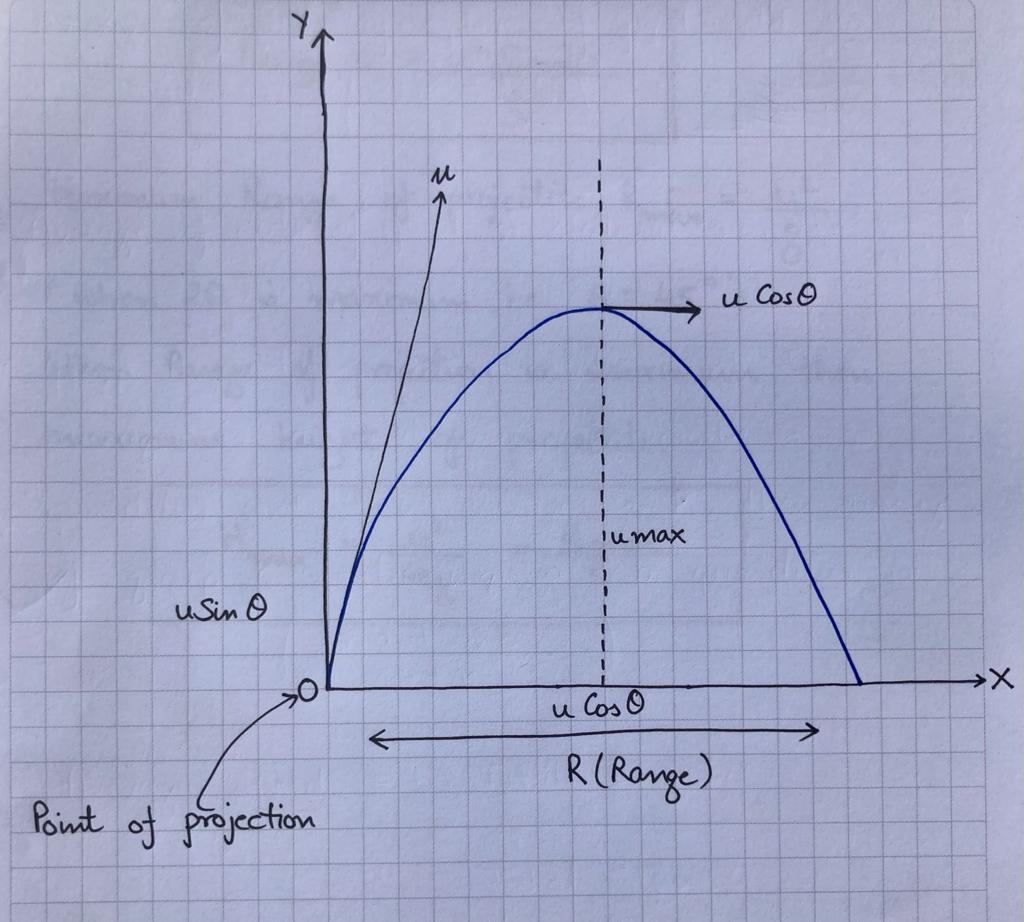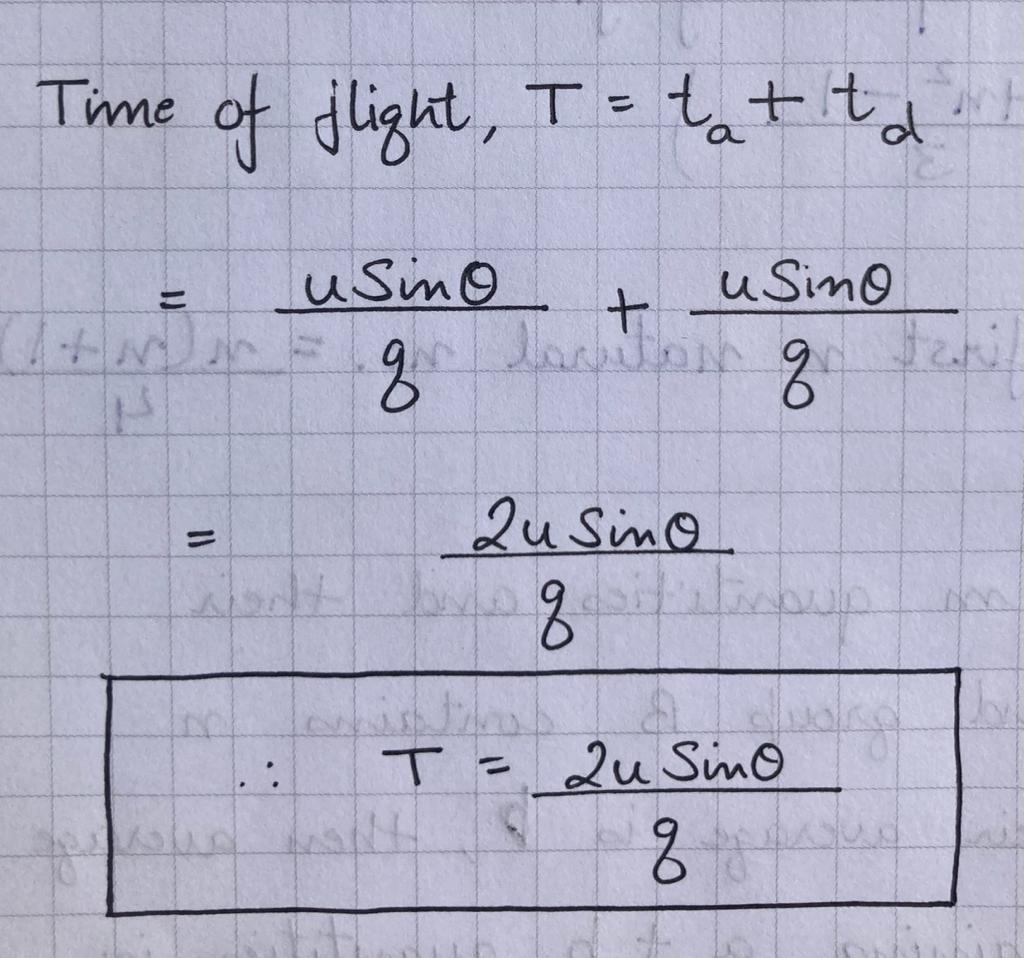PROJECTILE MOTION
When an object is so projected that it makes a certain angle with the horizontal then the motion of the object is said to be in projectile motion and the path followed by an object is known as trajectory. The path of the projectile is a parabola. Projectile motion can be considered as a combination of two independent 1-dimensional motions along a straight line, one along the horizontal direction with constant velocity and other along vertical direction under gravitation.

Given below are a few examples of projectile motion:
- The motion of the rocket after burnout.
- The motion of a bomb dropped from an aeroplane.
- The motion of a bullet fired by a firing tank.
- The motion of a basketball in a basket.
- The motion of a ball after hitting the bat.
- The motion of a ball thrown in the horizontal direction.
FORMULAE FOR PROJECTILE MOTION
Component of Velocity: The horizontal component of initial velocity and the vertical component of initial velocity is

Time of Ascent: The time for which the projectile is ascending up is known as a time of ascent.

Time of Descent: The time for which the projectile is descending down is known as a time of descent.

Maximum Height: The maximum value of vertical displacement of projectile motion is known as Maximum height. It is denoted by H.

Time of Flight: The total time for which the projectile is in motion is known as a time of flight. It is denoted by T.

Range: The horizontal displacement of a projectile during its motion is known as Range. It is denoted by R.

SOME IMPORTANT POINTS
- The range of the projectile would be maximum at an angle of projection of 45 degrees.
- In projectile motion, the horizontal component of the velocity of the projectile always remains constant.
- The speed of the projectile is minimum at the topmost point on the trajectory.
- In baseball, a player adjusts the speed and angle of projection so that the ball covers the desired distance in minimum time.
- Acceleration of the projectile during its motion always remains constant.

3 replies on “Projectile Motion”
Your style is so unique compared to many other people. Thank you for publishing when you have the opportunity,Guess I will just make this bookmarked.2
You have a gift for explaining things. illplaywithyou
It is always great to come across a page where the admin take an actual effort to generate a really good article. Check out my website YW9 concerning about Airport Transfer.